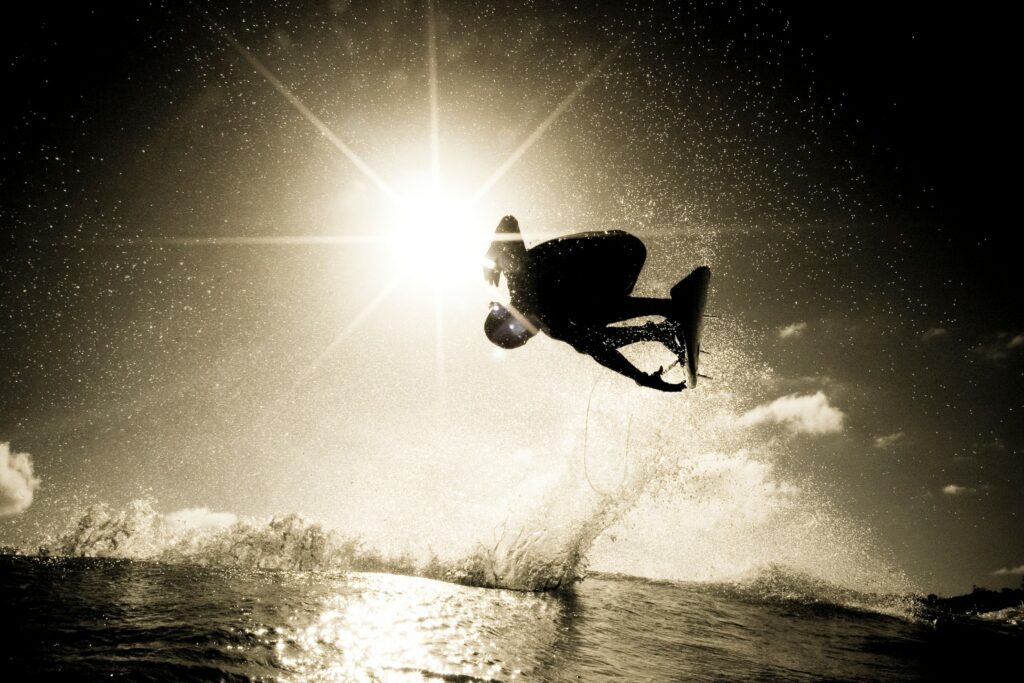The Origins of Surfing Gear: A Brief History
Surfing gear has come a long way since its inception, allowing surfers to ride the waves with greater control and safety. From the ancient Polynesians using rudimentary wooden boards, the evolution of surfing gear has been a reflection of man’s ambitious quest for conquering waves. Those primitive boards were an extension of the relationship the islander communities had with the ocean, a rite of passage, and a source of food, transportation, and entertainment. As surfing landed on the shores of California, brought by Hawaiian Duke Kahanamoku in the early 20th century, it ignited an entirely adventurous and free-spirited beach culture, evolving rapidly with each passing decade. Noteworthy surf schools in San Diego and other coastal towns paved the way for methodical teaching and learning approaches, further fueling the need for better, reliable gear.
The Evolution of the Surfboard: From Wood to High-tech Materials
If there’s an icon symbolizing the essence of surfing, it’s the surfboard. Early Hawaiian surfboards, called ‘papa he’e nalu,’ were enormous, heavy, and lacked the balance and maneuverability of modern boards. As surfing transformed from an exotic recreation to a widely practiced sport, the need for better gear became evident. Enter streamlined boards made of balsa wood in the 1940s, and then the revolution of foam and fiberglass in the ’60s, which changed the game entirely. These materials made boards lighter, more durable, and performance-driven. Today, computer-aided design and cutting-edge materials, such as carbon fiber and epoxy resins, render the boards faster and more forgiving than ever. The School of surf in San Diego and worldwide employs such high-tech boards in their lessons, making learning to surf a less daunting task for beginners.
Wetsuits: From Cold Protection to Performance Gear
As surfing spread beyond warm Hawaiian waters to colder locales such as California, Australia, and the UK, the invention of wetsuits in the ’50s by a California physicist, Jack O’Neill, was a game-changer. These suits kept surfers warmer in chilly waters, enabling surf sessions to last longer. Over the decades, wetsuits have undergone continuous upgrading, featuring lighter, more flexible materials, tailored fit, and innovative fastenings. Modern wetsuits also enhance performance by assisting buoyancy and movement and providing extra protection against underwater hazards.
Surfing Accessories Evolution: Leashes, Fins, and Wax
The development of surfing gear goes beyond boards and wetsuits. The leash, for instance, invented in the ’70s, stopped runaway surfboards, preventing injuries and making surfing safer. Similarly, fins evolved from being fixed wooden parts on a board to removable modern-day plastic fins, offering better control and maneuverability. We can’t overlook the importance of surf wax either. This simple accessory, developed in the ’60s, offers a grip to stand firmly on the board, preventing slips and falls. Each evolution in these surfing gears has played a significant role in shaping how the sport is enjoyed today. Instructed lessons at any esteemed surf school in San Diego would offer teachings on using these gear effectively, emphasizing both surfing techniques and safety measures.
Impact of Technology on the Development of Future Surf Gear
The steady transformation of surf gear owes much to the advancements in technology. Innovations such as computer-aided design (CAD) are making it possible to test various surfboard shapes and designs before production, ensuring the best performance on the water. Materials sciences are creating lighter, stronger, and more advanced composites for surfboards and wetsuits. Technology has also brought about GPS-enabled smartwatches tailored for surfers that record wave counts, speeds, and surf session duration. The software applications that offer real-time wind and wave forecasts are today an integral part of a surfer’s toolkit.
Eco-friendly Surfing Gear: A Rising Trend
The modern surfer’s love for the ocean extends beyond riding waves; there’s a growing consciousness about preserving the marine environment. This heightened environmental awareness is reflected in the rising trend of eco-friendly surfing gear. There’s a growing number of manufacturers producing boards using sustainably harvested wood, recycled foam, or bio-resin. Similarly, eco-conscious wetsuits made from natural rubber or recycled plastics are steadily gaining popularity.
Role of Professional Surfers in Gear Evolution

Professional surfers have always been instrumental in shaping the development of surf gear. Their feedback and demands for high-performing equipment have led manufacturers to introduce ground-breaking features and designs. Surfing legends like Kelly Slater have even launched their own gear and clothing lines, focused on performance and sustainability.
Influence of Surf Competitions in Equipment Advancements
Surfing competitions have been a major driving force in the continued evolution of surf gear. The demanding conditions of competitive surfing necessitate the development of high-performance equipment. Heated vests in cold surf conditions and hydrodynamic swimsuits that reduce drag are some of the advancements seen recently. The inclusion of surfing in the Olympics will significantly boost research and development in this sector.
From Traditional to Innovative: Noteworthy Gear Manufacturers
While brands like O’Neill, Quiksilver, and Rip Curl have been long-standing pillars in the surf gear industry, many innovative smaller players are now emerging. From Firewire’s eco-friendly surfboards to Patagonia’s sustainable wetsuits, these manufacturers are pushing the envelope of surfing gear in exciting directions.
Gear Matters: How Equipment Impacts Your Surfing Experience
Whether you’re a seasoned wave rider or a novice at a surf school in San Diego, the right gear significantly impacts your surfing experience. A well-tailored wetsuit can enable you to withstand cold water temperatures and surf longer. The correct surfboard can help you catch and ride waves better. Quality gear not only enhances your performance on the waves but also ensures your safety in the water.
The Future of Surf Gear Evolution
As we look to the future of surfing gear, it’s clear that the success lies in the dynamic merger of performance, technology, and sustainability. Expect to see more eco-friendly materials, optimized designs aided by tech simulations, gear supporting women surfers, and equipment tailored to all levels of surfers. The integrated stride of these elements will continue to redefine the surf gear industry and bring more joy and power to every surfer’s ride.


